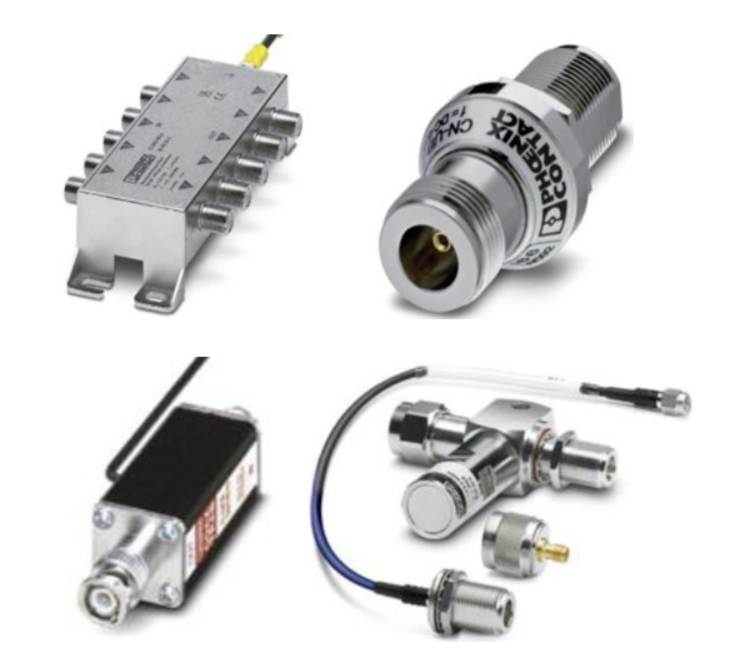Phoenix Contact RF Surge Protectors

Phoenix Contact RF surge protectors are designed to safeguard radio frequency systems and transceiver equipment from surge voltages caused by lightning strikes and nearby electrical events. Remote installations and antenna systems are especially vulnerable due to long coaxial cable runs and exposed antennas, which can conduct surge energy directly into sensitive device interfaces. RF surge protection helps reduce the risk of equipment damage and system downtime.
These surge protection devices utilize either gas-filled surge arresters or advanced Lambda/4 technology. Lambda/4 protectors create a frequency-tuned short circuit between the inner conductor and shield, allowing designated RF signals to pass without attenuation while diverting surge energy safely to ground. This design supports wide bandwidth transmission, typically from 0.8 to 2.25 GHz, while maintaining a low voltage protection level.
Phoenix Contact RF surge protectors are suitable for a wide range of applications, including radio, television, satellite, and industrial wireless communication systems. Devices are available with common RF connector types such as BNC, TNC, N, SMA, and 7/16 DIN, allowing compatibility with various antenna cables and radio link technologies. Mounting options support integration at antenna wall connections, inline cable runs, and multi-channel satellite installations.
FAQs
Q: Why are RF surge protectors important for antenna systems?
Antenna systems and long coaxial cables are exposed to lightning-induced surge voltages, which can travel along the cable and damage sensitive transceiver electronics without proper surge protection.
Q: What is Lambda/4 technology in RF surge protection?
Lambda/4 technology uses a frequency-matched short circuit between the conductor and shield to pass RF signals without loss while diverting surge energy to ground.
Q: What frequency ranges do Phoenix Contact RF surge protectors support?
Many Lambda/4 RF surge protectors support wide bandwidths, commonly ranging from approximately 0.8 to 2.25 GHz, depending on the model.
Q: Where are RF surge protectors typically installed?
They are usually installed inline between the antenna and the connected device, such as at antenna wall connections, equipment inputs, or satellite receiver interfaces.
Q: What connector types are available for Phoenix Contact RF surge protectors?
Phoenix Contact RF surge protectors are available with BNC, TNC, N, SMA, F, and 7/16 DIN connectors to support a variety of RF and antenna applications.
Why Buy Phoenix Contact RF Surge Protectors from RSP Supply
RSP Supply offers a broad selection of Phoenix Contact RF surge protectors designed for industrial wireless, radio, and antenna systems. These devices provide effective protection against lightning-induced surges while supporting reliable RF signal transmission. Customers rely on RSP Supply for dependable industrial surge protection solutions, knowledgeable technical support, and components engineered for demanding communication environments.

